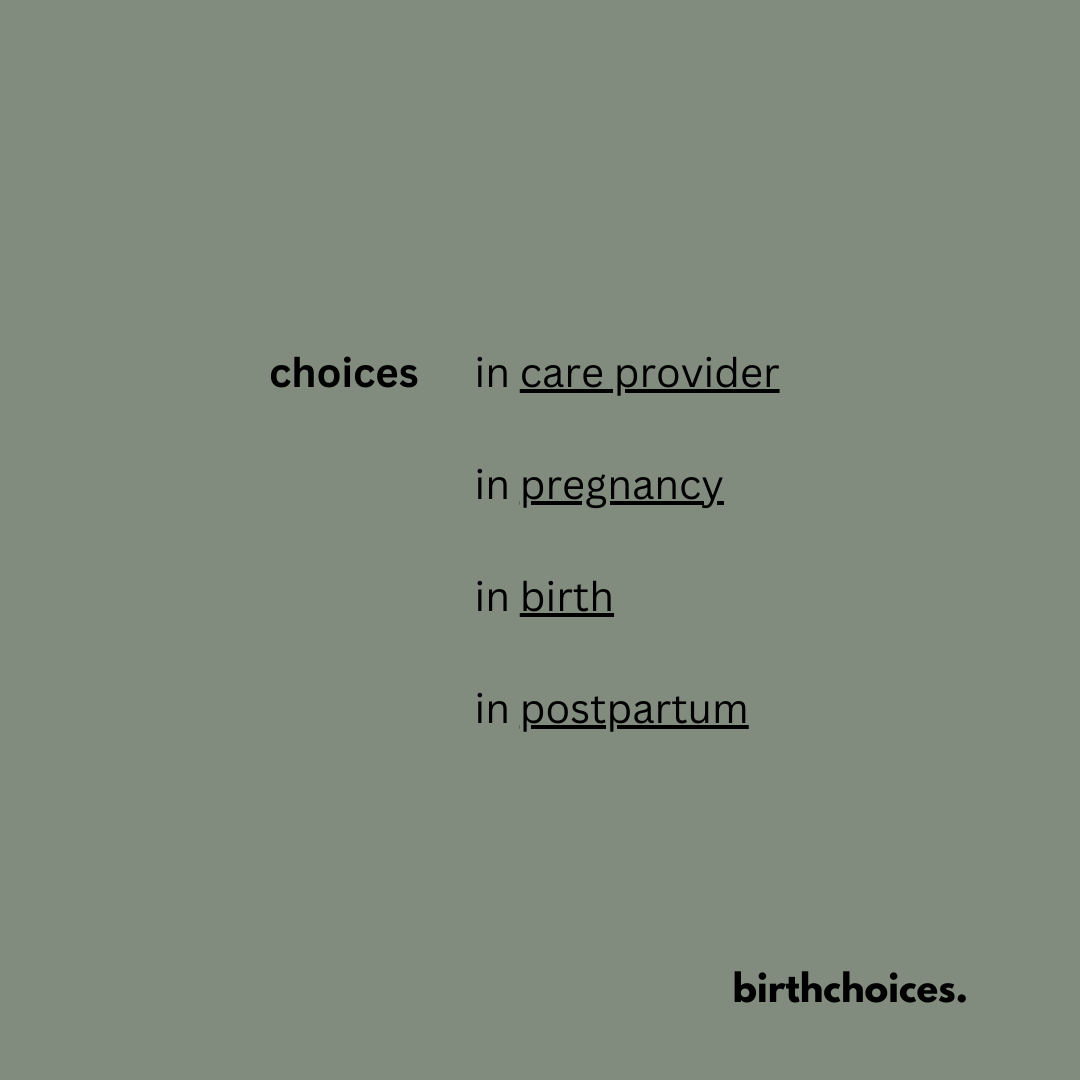
Building out your birth team — how can a student midwife support me?
Student midwives are an amazing option for free additional support during pregnancy, labour and birth, and into postpartum, providing continuity of care to you and assisting you to advocate and navigate your way through the maternity system, wherever you are birthing. The evidence shows that student midwifery support benefits women and families not only emotional but in promoting better outcomes — higher rates of spontaneous vaginal birth, lower rates of induction, caesarean sections, episiotomies, among others.
So what is involved in having a student? And how can you find the right student for you? Have a read of this post and listen to the birthchoices podcast for more insights.

Choosing your care provider
You’re pregnant, so now what? Choosing your care provider for pregnancy, birth and postpartum is one of the most important decisions you can make. There are so many options, and we are here to guide you through what choices are available, what the evidence says about them, and might align best with you and your values.
From care in a public hospital in fragmented models, to continuity of care and MGP, to care from a private midwife or private obstetrician, with the support of a doula. The options are endless, and you can combine them to create your ideal birth support team.

Pain in labour and birth
Let’s talk pain in labour and birth.
To begin to understand pain in labour, in order to work “with it” — we need to distinguish between physiological vs pathological pain, induced labours vs spontaneous labours, and the role of environmental factors including birth space, support team, and your previous life experiences with pain and intense physical events.

Choosing your pregnancy and birth model of care — preparing before you see your GP
Pregnancy and birth care options — choosing your model of care and preparing before you see your GP
In an ideal world (and with many excellent GPs) you will be given detailed counselling by your GP about the full gamut of care provider choices (and birth venues) available to you — from general public maternity care, midwifery led care (both through public hospital continuity programs and private midwifery), to private obstetric care and shared care (both with private midwives and with said GPs).
This counselling should also be accompanied by an evidence-based discussion of what is best for you and your circumstances (if you want a certain type of birth, have certain health (emotional and physical) considerations, which care provider is best suited to supporting that). Yet common experience tells us this rarely occurs, and the direction of the discussion is generally dictated by your health insurance status alone.

Birth affirmations
Birth affirmations are not just for looks, and are not just for the birth either. Ideally they are written by you for you, and for your story. Ideally by the time you get to your birth you hardly need them anyway, because you have used them to prepare your body and mind in pregnancy, and have internalised them. Some find them helpful to utter to themselves either inwardly or outwardly, a form of ritual (more on this later), and for others they forget all about them. Importantly they may also provide guidance to your birth support team about the kinds of reassurances you would like to hear in birth.

Postpartum choices — It’s not just a case of immediate skin to skin
Your choices available to you don’t end once your baby is born, or aren’t limited to delayed cord clamping or skin to skin contact. They extend to the birth of your placenta, choices around the “management” of your baby’s umbilical cord, keeping your baby with you, whether and how you would like any baby checks or vaccinations to be completed, perineal suturing, breastfeeding and infant feeding, and the list goes on.


Why choice in care provider matters
Your choice of care provider matters. From public to private, midwifery led to obsetric-led, shared care, doula supported, or a mixture of all of them. Your choice of team can really set the trajectory for your birth, and your overall physical and emotional experience. Yet most people (very understandably) don’t know the full spectrum of options available to them. We are here to support you in your choice of model of care for pregnancy, birth and postpartum.

Your choices
You have choices. Lots of them. Not just birth choices, but choices to make from conception — choices in care provider, in pregnancy, in birth, and through postpartum (sure they continue into parenting and, well, life, but we’ll stop there). But you can only make choices if you know that you have them, and that they are yours to make.

